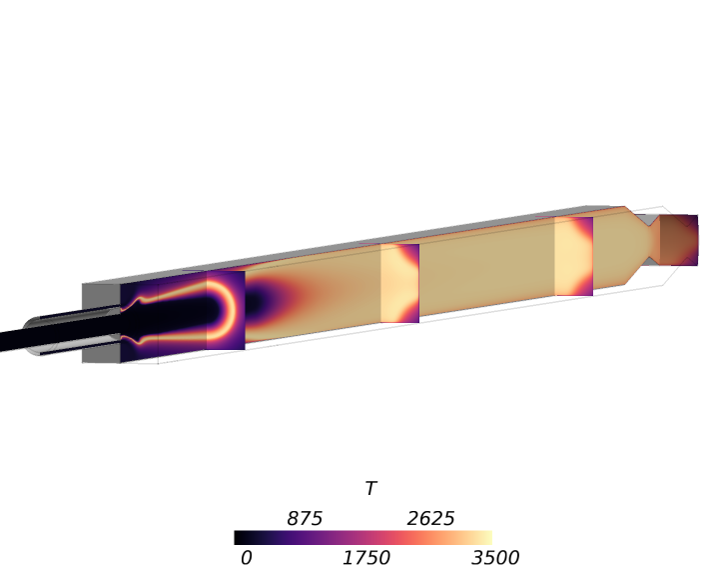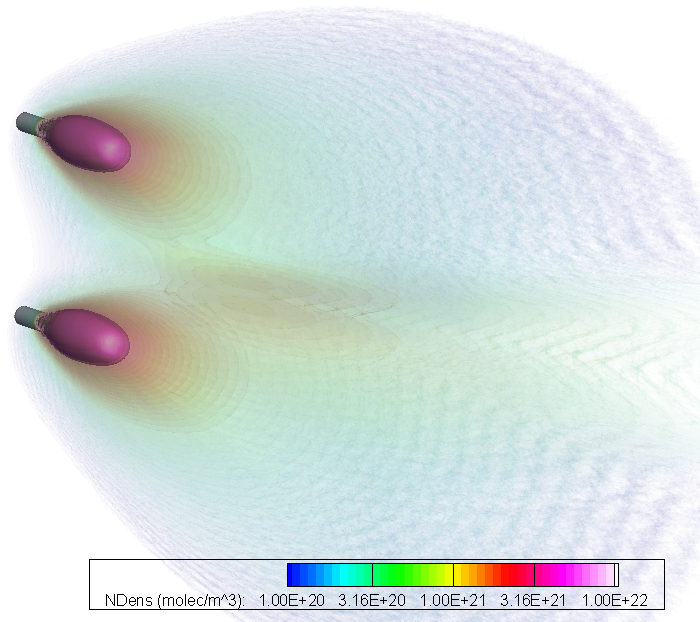Liquid-Propellant Propulsion System Simulation
JAXA Supercomputer System Annual Report April 2020-March 2021
Report Number: R20EG3215
Subject Category: Research and Development
- Responsible Representative: Taro Shimizu, Research and Development Directorate, Research Unit III
- Contact Information: Hiedyo Negishi(negishi.hideyo@jaxa.jp)
- Members: Ryutaro Furuya, Tetsuji Ogawa, Takayuki Ito, Hideyo Negishi, Yoichi Ohnishi, Miki Nishimoto, Yu Daimon, Ashvin Hosangadi, Osamu Fukasawa, Shinji Ohno, Andrea Zambon, Takenori Nakajima, Takashi Amemiya, Hironori Fujiwara, Hiroumi Tani, Keiichiro Fujimoto, Tetsufumi Ohmaru, Taroh Fukuda, Masashi Toyama, Akimitsu Terunuma, Rika Yamada, Satoshi Ukai, Himeko Yamamoto
Abstract
Next generation of space transport systems need not only to reduce costs with high perfoemance propulsion for a particular mission but also to meet requirements of various missions, for example moon lander, reusable upper stage rocket, Mars mission, and so on. Liquid-Propellant System Analysis has an important roll to develop the next generation space transport system. Utilizing 3D numerical simulation results of the liquid rocket compornents, componet models are developed for the system analysis. The system analysis will use for evaluation of the development and operation for liquid rocket or spacecraft.
Reference URL
N/A
Reasons and benefits of using JAXA Supercomputer System
Component models of liquid propulsion systems are conventionally very simple and sometimes not consistent with physics of fluid dynamis or structural behaivor of propulsion systems. However, because of the recent development of computer science, even computationally expensive models can be used for numerical analysis for designs. In addition, high-fidelity CFD clarified physical phenomena in the component, and it enhances to develop more accurate component models. Concequently, high-fidelity CFD analyses are essential to clarify the phenomena in the liquid propulsion system. JSS enables us to carry out trade-off studies with a wide range of parameter, which contribute to build new models and find out new insights of liquid propulsion systems.
Achievements of the Year
Two-kinds of simulations were performed to develop the component model for liquid propulsion systems. Fig. 1 shows temperature contour of subctirical combustion simulation to develop the componet model of liquid rocket combustion chamber. This static fireing test was perfomed in Technical University of Munich. The simulated wall heat flux was compared with the experimental data. Fig. 2 shows the number of density distribution of thruster plume interactions to develop plume heating model of thruster. This test was perfomed in CNRS. The simulated number of density distribution was compared with the experimental data. These experimental data and simulation results shows good agreement, and the validation of these simulation model was completed. Based on the parameter study using this simulation tools, symple component models on the system simulation tool were developed.
Publications
N/A
Usage of JSS
Computational Information
- Process Parallelization Methods: MPI
- Thread Parallelization Methods: FLAT
- Number of Processes: 1 – 100
- Elapsed Time per Case: 200 Hour(s)
Resources Used(JSS2)
Fraction of Usage in Total Resources*1(%): 0.65
Details
Please refer to System Configuration of JSS2 for the system configuration and major specifications of JSS2.
| System Name | Amount of Core Time(core x hours) | Fraction of Usage*2(%) |
|---|---|---|
| SORA-MA | 29,515.42 | 0.01 |
| SORA-PP | 1,102,216.08 | 8.64 |
| SORA-LM | 23.14 | 0.01 |
| SORA-TPP | 902.85 | 0.09 |
| File System Name | Storage Assigned(GiB) | Fraction of Usage*2(%) |
|---|---|---|
| /home | 624.53 | 0.57 |
| /data | 20,238.81 | 0.39 |
| /ltmp | 9,138.90 | 0.78 |
| Archiver Name | Storage Used(TiB) | Fraction of Usage*2(%) |
|---|---|---|
| J-SPACE | 4.51 | 0.15 |
*1: Fraction of Usage in Total Resources: Weighted average of three resource types (Computing, File System, and Archiver).
*2: Fraction of Usage:Percentage of usage relative to each resource used in one year.
Resources Used(JSS3)
Fraction of Usage in Total Resources*1(%): 0.31
Details
Please refer to System Configuration of JSS3 for the system configuration and major specifications of JSS3.
| System Name | Amount of Core Time(core x hours) | Fraction of Usage*2(%) |
|---|---|---|
| TOKI-SORA | 1,103,077.57 | 0.24 |
| TOKI-RURI | 102,859.46 | 0.59 |
| TOKI-TRURI | 0.00 | 0.00 |
| File System Name | Storage Assigned(GiB) | Fraction of Usage*2(%) |
|---|---|---|
| /home | 1,082.53 | 0.74 |
| /data | 60,289.95 | 1.01 |
| /ssd | 6,122.45 | 3.20 |
| Archiver Name | Storage Used(TiB) | Fraction of Usage*2(%) |
|---|---|---|
| J-SPACE | 4.51 | 0.15 |
*1: Fraction of Usage in Total Resources: Weighted average of three resource types (Computing, File System, and Archiver).
*2: Fraction of Usage:Percentage of usage relative to each resource used in one year.
JAXA Supercomputer System Annual Report April 2020-March 2021




